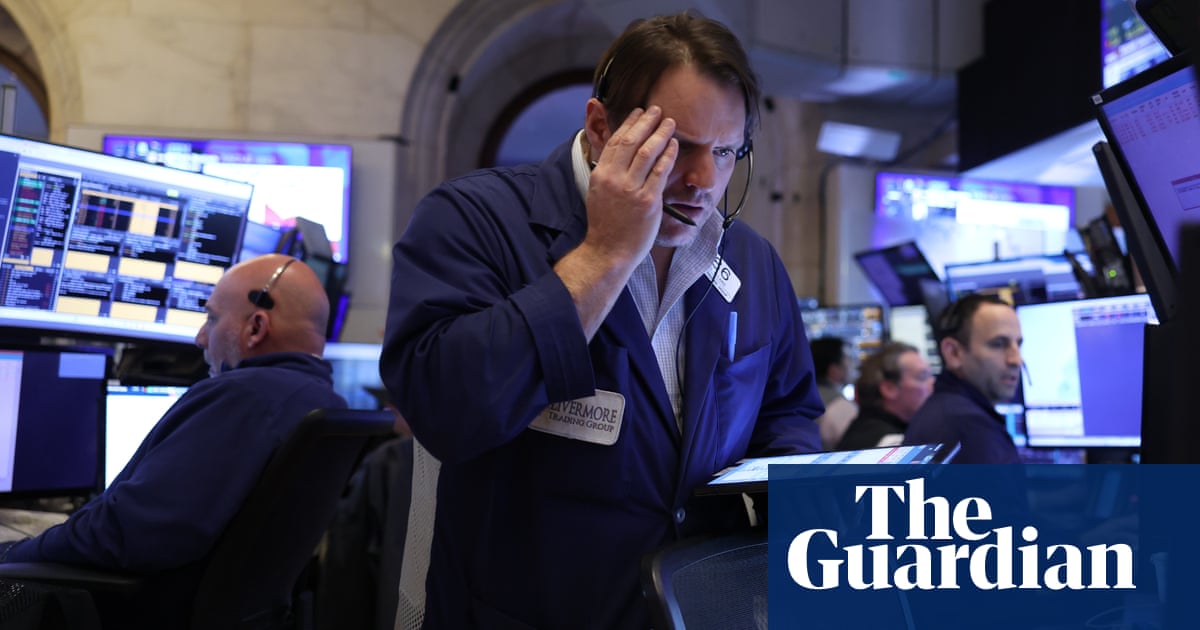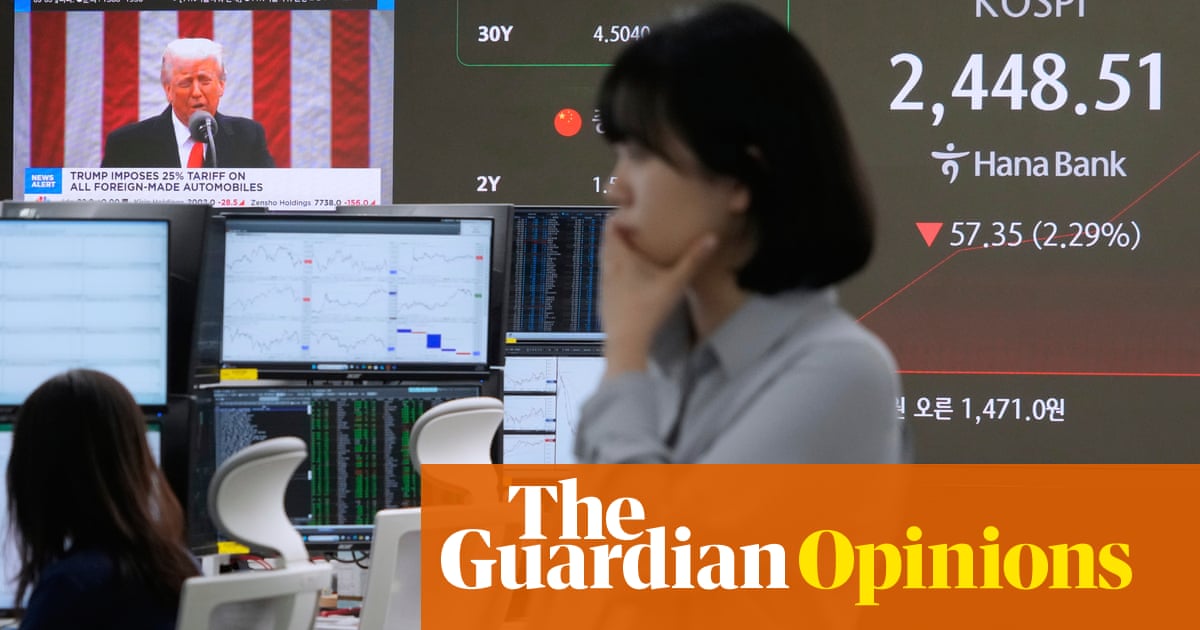Stocks dived and investors scrambled to the safety of bonds, gold and the yen on Thursday as Donald Trump unveiled a bigger-than-expected wall of tariffs around the world’s largest economy, upending trade and supply chains.
The technology sector was pummelled as manufacturing hubs in China and Taiwan faced new tariffs above 30%. In total, China now faces an eye-watering 54% in tariffs on its exports to the US.
“The US effective tariff rate on all imports look to be the highest level in over a century,” said Ben Wiltshire, Citi’s global rates trading strategist.
Nasdaq futures tumbled 3.3% and in after-hours trade about $760bn was wiped from the market value of “Magnificent Seven” technology leaders. Apple shares – hit hardest as iPhones are made in China – were down nearly 7%.
S&P 500 futures fell 2.7%, FTSE futures fell 1.6%, while European futures fell nearly 2%.
Gold hit a record high above $3,160 an ounce, and oil, a proxy for global growth, slumped more than 2% to put benchmark Brent futures at $73.24 a barrel.
Japan’s Nikkei was down 2.8% after earlier sliding to an eight-month low, with nearly every index member falling as shippers, banks, insurers and exporters copped a beating.
MSCI’s broadest index of Asia-Pacific shares outside Japan fell more than 1%.
Benchmark 10-year US treasury yields dropped 14 basis points to a five-month low of 4.04% as investors braced for slower US growth, while interest rate futures priced in a higher chance of rate cuts in the months ahead.
“The tariffs are so comprehensive and so much larger than we expected,” said Jeanette Gerratty, chief economist at wealth advisory Robertson Stephens in the US tech heartland of Menlo Park, California.
Trump announced a baseline 10% tariff on imports from all countries, with far higher rates on some trading partners, particularly in Asia.
Besides China’s 34% tax, Japan got a 24% tariff, Vietnam 46% and South Korea 25%. The EU was hit with 20%.
Chinese markets opened with the CSI300 blue-chip index down 0.24%, while the Shanghai Composite Index was down 0.1%.
Hong Kong’s Hang Seng Index slid 1.6%.
Elsewhere, South Korea’s Kospi fell 2%. Van Eck’s Vietnam ETF fell more than 8% in after-hours trade. Australian shares fell 2%.
Markets in Taiwan were closed for a holiday.
China’s yuan fell to its weakest since 13 February in the onshore market at 7.3060 per dollar, tracking its offshore counterpart, which bottomed at a two-month low earlier in the session. Trump also shut a loophole used to ship low-value packages from China, which is likely to hurt its giant online retailers
Ten-year Japanese government bond futures made their sharpest jump in eight months.
“The tariffs announced today lead to significant risk to global trade,” said Zhiwei Zhang, chief economist at Pinpoint Asset Management in Hong Kong.
“Supply chains in east Asia face pressure in particular.”
The US dollar was higher against Asian currencies in rollercoaster currency trade, except against the safe-haven yen, which rose to the strong side of 148 yen per dollar.
Trading partners are expected to respond with countermeasures of their own that could lead to dramatically higher prices.
“The tariff rates unveiled this morning far exceed baseline expectations, and if they aren’t negotiated down promptly, expectations for a recession in the U.S. will rise dramatically,” IG market analyst Tony Sycamore said.

.png) 19 hours ago
4
19 hours ago
4













































